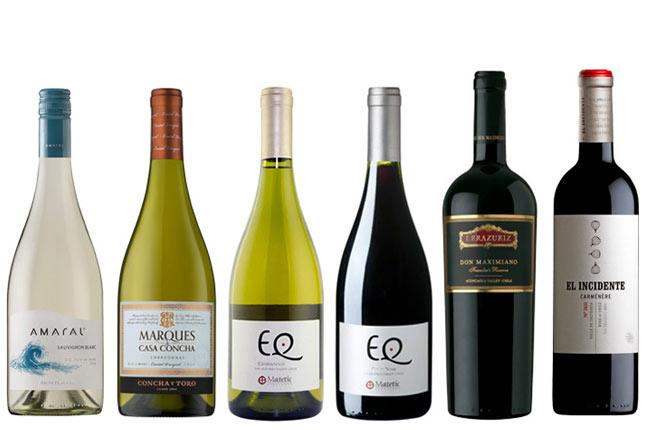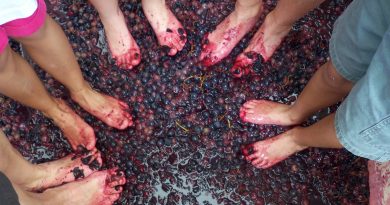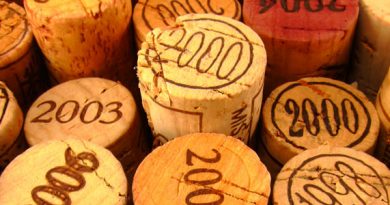Chilean Wine
What strikes a chord first when you consider popular wine nations? There’s a decent possibility your brain goes to France, Italy, or Spain. That is justifiable. These nations do deliver probably the most mind-boggling wines on the planet. However, they’re not by any means the only ones.
While Chilean wines probably won’t be also known as their European cousins, you would rather not neglect these South American rarities. While its wines are from the “New World,” Chile has been delivering them for near 500 years. It’s the second-biggest winemaker in South America and the seventh-biggest in the world.
The wines of Chile are different, one of a kind, and delightful. Assuming you’ve never attempted one, you are passing up a major opportunity. Here, we furnish you with a fast Chilean wine manual to assist you with learning a smidgen more with regards to the lovely wines this nation needs to offer.
A Brief History of Chilean Wine
The principal grapevines in Chile were planted during the 1500s. All things considered, critical wine creation didn’t start until the 1800s. During this time, European foreigners carried more assortments of grapes with them toward the South American country.
The accomplishment of Chile’s wine creation during the 1800s was expected, to some degree, to the nation’s area. During the mid-1800s, a vermin called phylloxera attacked grape plantations around the world. Separated from the remainder of the world by the Atacama Desert, the Andes Mountains, and the Pacific Ocean, Chile’s grapevines got away from a comparative destiny. All things considered, the nation has probably the most established plants. More seasoned plants will quite often create more thought, nuanced grapes — attributes that are a critical resource for Chile’s wine industry.
Up until the 1990s, it was Chileans who partook in a greater part of Chilean wines. When the country’s winemakers started sending out their wines, however, individuals from one side of the planet to the other started paying heed to their outstanding quality.
Key Grape Varieties in Chile
Chile is a novel nation with regard to wine. Various environments across its different districts permit it to grow a wide scope of grape assortments. The hotter climate inland gives an optimal climate to all the more remarkable grapes, while the cooler beachfront and higher-height regions give phenomenal conditions to more sensitive ones.
Cabernet Sauvignon
The nation is eminent for its red wines, particularly Cabernet Sauvignon. The grapes, which fill in Chile’s hotter districts, are ordinarily rich and delicious. The wines they produce have delicate tannins and have a smooth, satiny surface. Notwithstanding the cherry organic product flavors, they include notes of zest and earth. A significant number of them age especially well.
Carménère
While Cabernet Sauvignon is one of the most notable assortments in Chile, the nation’s “specialty” grape is the Carménère. Initially thought to be Merlot imported from the Bordeaux district, hereditary testing later found otherwise.
The wines delivered from these grapes are more appetizing. They’re medium-bodied with recognizable notes of chime pepper, alongside green peppercorn, chocolate, and pomegranate.
Different Reds
Chilean Pinot Noir wines are acquiring prevalence. They are light-bodied reds with kinds of strawberries, raspberries, and vanilla yogurt.
Chile’s full-bodied Syrah wines are likewise turning out to be more predominant. These wines include notes of dark cherry, dark pepper, chocolate, raspberry, and flavor.
Sauvignon Blanc
While Chile might be most popular for its red wines, the nation’s white grapes have been acquiring prevalence in the course of the most recent couple of years too. Sauvignon Blanc wines are Chile’s unique white assortment. The cooler environment and vicinity to the sea give the grapes — and the wines — a particular minerality. The wines likewise will more often than not be natural product forward, citrusy, and wonderfully bright.
Chile Wine Regions
The fruitful soil and appropriate environment of Chile make it an optimal spot for different sorts of grapes to develop. The nation has a few developing districts. Here, we’ll center around a couple of the most eminent ones.
Focal Valley
As the name recommends, the Central Valley is solidly in the focal point of Chile. It’s additionally one of the nation’s biggest and most different developing districts. The cooler environment of the Northern Valley is great for such assortments as Riesling and Viognier, while the hotter Southern Valley produces Cabernet Sauvignon, Syrah, and Merlot.
Colchagua Valley
The Colchagua Valley locale includes a warm environment, alongside cooler sea breezes and ripe soil. It’s generally renowned for the country’s most well-known wines, including Cabernet Sauvignon, Carménère, Syrah, and Malbec. The western piece of the district likewise delivers some remarkable whites, like Sauvignon Blanc and Chardonnay.
Casablanca Valley
The Casablanca Valley locale is a more up-to-date wine-creating area. It’s just been delivering wines for around the most recent thirty years. It’s a cooler, sloping locale. All things considered, it delivers some incredible whites — most outstandingly Sauvignon Blanc and Chardonnay. It additionally gives some brilliant Pinot Noir grapes.
Maule Valley
The Maule Valley area has the biggest wine creation in Chile. It creates some staggering reds, including Cabernet Sauvignon, Syrah, and Carménère. The environment is hotter, and the dirt is both prolific and free-depleting, making it an optimal region for such grapes.
Instructions to Read a Chilean Wine Label
Chile’s prerequisites for marking wines are not quite as severe as those in different nations. For example, the law just necessitates that the grape, vintage, and geological area expressed on the mark make up three-fourths of what’s really in the bottle.
Chile has marks like Reserva, Reserva Especial, Reserva Privada, and Gran Reserva — like Spanish Rioja wines. In contrast to Spain, nonetheless, the necessities in Chile aren’t close to as severe. As a rule, Reserva and Reserva Especial names demonstrate that the wine has no less than 12% liquor. To bear the Reserva Privada and Gran Reserva marks in Chile, a wine is needed to contain essentially 12.5 percent liquor and to have invested to some degree some energy in oak barrels.
Along these lines, while the names will not actually give any sign of value, they can in any case let you know somewhat concerning what’s inside the bottle.
Is it accurate to say that you are Ready to Add Chilean Wine to Your List of Favorites?
Chilean wines probably won’t be too known as those from France, Italy, or Spain, yet that doesn’t make them any less deserving of fame. Truth be told, wines from this South American nation are probably the most one-of-a-kind and flavorful you’ll ever taste.
In the event that you haven’t presented yourself with a glass of Chilean Cabernet Sauvignon, Carménère, or Sauvignon Blanc, your next evening gathering or night nestled into a decent book is the ideal opportunity.
JJ Buckley Fine Wines has an immense determination of wines from everywhere in the world, including Chile. If you really want assistance, our wine experts are accessible for a meeting. Visit our site today and look at our choice.




